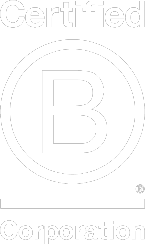Whether building brand awareness campaigns or launching a new product, marketers devote a lot of time to considering the make-up of their audiences, and for good reason. Knowing your audience helps marketers to better target campaigns and events, really any marketing activations, to the group of people who are most likely to buy whatever is being sold.
That said, just knowing who your potential customers are isn’t enough. You must target them directly to see measurable success. That’s where audience segmentation comes in.
What is audience segmentation?
At its core, audience segmentation is the process of breaking a large target audience into smaller, more focused groups. By identifying subgroups with shared qualities, we’re better able to tailor messaging and often build stronger connections as a result. That, in turn, leads to a lift in sales.
Though it’s sometimes referred to as ‘customer segmentation’, it’s best to consider this as a process of narrowing your audience as, though we’d all wish for the opposite, not every member of your audience will become a customer. They will, however, build a connection with your brand when targeted appropriately.
Audience segmentation can narrow marketers’ focus, enabling us to deliver appealing messages to select audiences. As business author, Seth Godin, explains, though we “worry about disappointing, missing, offending or otherwise leaving behind someone who might become our customer,” segmenting our audience helps us to avoid creating mediocre content.
In trying to please everyone, we usually end up pleasing no one. Segmentation helps us to avoid that trap all together.
What are the four types of segmentation?
So, how do you go about segmenting your audience? The process begins by identifying points of difference in your audience to break that customer base into smaller, more targetable groups. That can be challenging, but there are a few guiding categories that can help. These are usually narrowed down to:
- Behavioural: This tends to cover how people engage with your business, so you can create behavioural segments based on things like communication preferences, previous purchases or how frequently these people interact with your brand.
- Demographic: These are the differentiators we tend to pivot towards automatically and include things like age, gender and income.
- Geographical: This might be the simplest of them all – geographic segments are usually made up of people who live or work within a set radius of a location that is important to your business.
- Attitudinal: Defined by personal interests, values and culture, this type of segment will bring together people with similar outlooks on life and your business.
Why do it?
Dividing your audience into subgroups does more than make your job easier. Segmented campaigns have fantastic success rates and are regularly more effective than those aiming for mass appeal. Segmented campaigns can lead to a 760% increase in revenue and, digging deeper, segmented email campaigns have been shown to increase clicks by over 100%.
Partly, this is down to the fact that we expect, and appreciate, personalisation. Segmentation allows for this by separating audience groups along defined lines. These might include gender, age, income, location or more complex differentiators related to your previous experience with a business.
Whatever information you hold on your customers and wider audience, it can be used to personalise your comms and campaigns. An impressive 80% of consumers are more likely to do business with you if they see that personalisation. To find out a bit more about the reasons why we should be segmenting our audiences, we happen to have a blog on that very subject. Check it out HERE.
How to effectively segment your audience
Segmenting your audience can have incredible results, but it does require thought to identify segments that match your goals. Simply creating subgroups based on arbitrary information does not work. First, ask:
- What am I trying to achieve? Having set goals in place enables us to target groups that have a problem your business can solve – if you can’t, they’re not a relevant audience.
- Is each segment I’ve created different to the others? Design your groups with as little overlap as possible to avoid creating extra work for yourself and confused messaging for customers.
- Is it large enough to offer a return? You might be able to build really targeted segments from the information you hold, but as comms expert Frank Lubby advises, if you can’t describe your group with just three adjectives, it’s too complex.
- Where can I effectively target this segment? There’s no use in creating a subgroup you can’t engage with. Make sure you identify platforms where your segments are active so they can be effectively marketed to.
If the segments you have in mind fit in with your answers to each of these questions, they should prove effective for your next marketing campaign.
Of course there is a lot more to effectively segmenting your audience. Find out more in our blog 5 handy steps to help you segment your audience.
If you need a little help defining your audience or would rather hand over the reins and have an expert team of researchers and comms professionals run your next campaign, we’re here to help. Just send us an email at anythingspossible@drpgroup.com to get started.
/DRPG%2045th%20Anniversary/DRPG%2045th%20White%20-%20No%20Text.png)


 Back
Back

/Blog%20Images/AEO%20SEO%20-%20Digital%20Blog.jpg)



